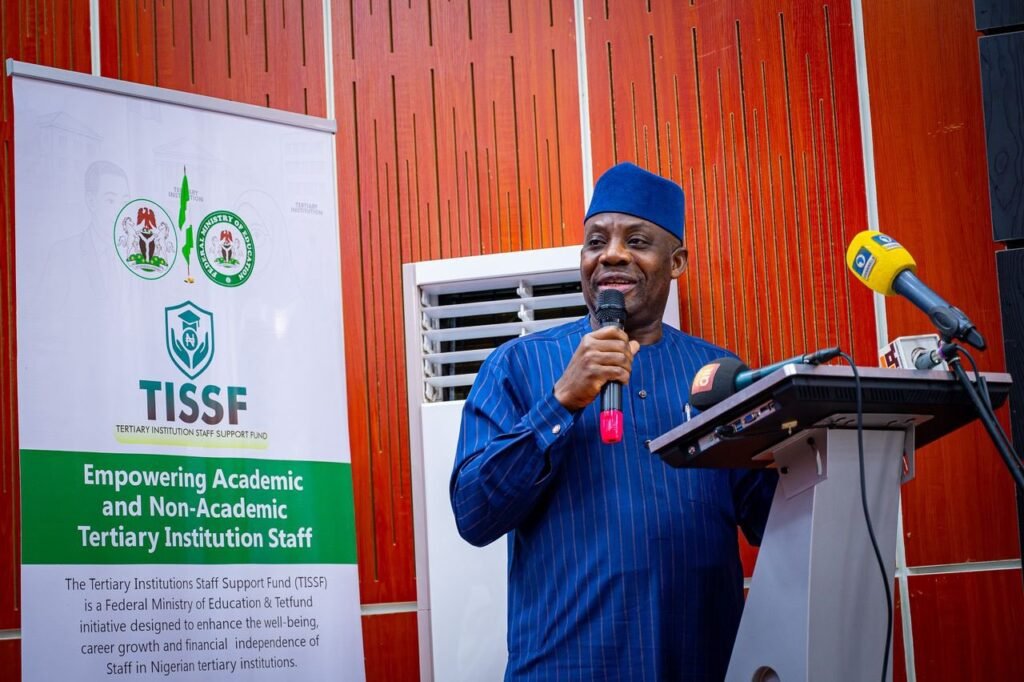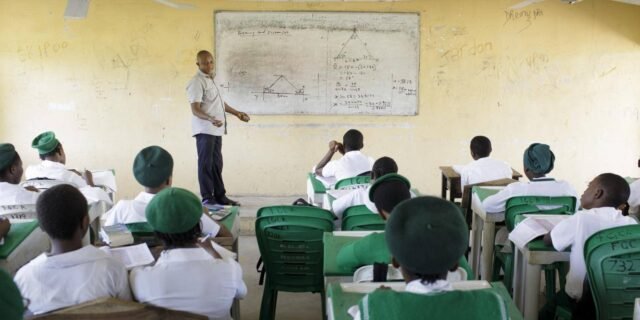Nigeria’s education sector is standing at a turning point. In a bold move, the Federal Government has unveiled a sweeping new curriculum set to begin with the 2025/2026 academic session. At its heart is a mission: to make learners future-ready, equip them with practical skills, and align classroom teaching with global best practices. But lofty aims alone won’t carry success. Realising the objectives of this new education curriculum depends on far more than policy statements—it will require rigorous planning, dedicated resources, stakeholder commitment, and an honest assessment of challenges on the ground.
Table of Contents

What Is Changing: Practical Skills, Fewer Subjects, and a Global Lens
The new curriculum, introduced by Education Minister Dr. Tunji Alausa, represents a paradigm shift away from rote learning towards hands-on competence. Junior Secondary School students (JSS1) will now select at least one trade subject—offering six options including solar photovoltaic installation and maintenance; fashion design; livestock farming; beauty and cosmetology; computer hardware and GSM repairs; and horticulture and crop production. This move underscores the government’s intention: not only to imbue pupils with academic knowledge, but also skills that respond to both local and global economic realities.
Across levels, the subject load is being recalibrated. Primary 1-3 pupils will study around 9-10 subjects; Primary 4-6 will have 10-12; JSS will take 12-14; Senior Secondary and technical school students will see reductions to 8-9 and 9-11 respectively. This is aimed at relieving the burden, enhancing subject depth, and ensuring students can engage meaningfully with fewer yet more relevant topics.
The curriculum will also emphasise emerging technologies—artificial intelligence, robotics, digital literacy—and core values like national heritage and effective citizenship. It is designed to be learner-centred and to produce outcomes that are transferable: skills that can adapt to changing job markets and societal needs.
Key Benefits & WHY THIS MATTERS
The reform has earned applause across Nigeria from education practitioners, private school associations, and vocational experts. Their reasons are straightforward:
- Addressing unemployment and underemployment. With formal jobs scarce, equipping youths early on with trade skills could lead to entrepreneurship, self-employment, and job creation. Sectors like agriculture, ICT, fashion, and trade are especially seen as having high growth potential.
- Bridging the academic-skill divide. For too long, the system has leaned heavily toward theoretical learning; many graduates lack hands-on abilities. This curriculum aims to close that gap.
- Reducing subject overload. Students often suffer from too many subjects, many of which may not have practical relevance. Simplifying the list is meant to improve comprehension and allow deeper mastery.
- Making Nigeria competitive globally. The moves, such as introducing digital literacy and robotics, are meant to bring Nigerian education more in line with global standards. Doing so could help attract investment and innovation.

Major Challenges: What Could Stall Success
Optimism is high—but many voices warn that without careful work, the objectives may remain aspirational. Key impediments identified include:
- Human capacity. There is concern over the lack of qualified teachers, especially for trade and technical subjects like solar installation or computer repairs. Also, teacher training will need to scale fast, including professional development in both the technical content and in modern pedagogy.
- Infrastructure and learning resources. Many schools—particularly in rural or under-resourced areas—lack labs, workshops, equipment, and even basic classroom facilities. Without these, theoretical knowledge may dominate, but practical skills will suffer.
- Funding and sustained investment. Policy reforms often fail when funding is irregular or inadequate. The curriculum change will require capital investment in infrastructure, teacher retraining, learning materials, and possibly incentives for private sector participation.
- Stakeholder readiness and mindset. Parents, communities, and school owners must understand and accept vocational/trade learning as valuable, not as fallback options. Public perception still tends to privilege university degrees. Changing mindsets will take awareness campaigns.
- Implementation timeline. Several experts believe the proposed 2025/2026 start may be too soon. Preparing all schools nationwide, training personnel, securing equipment, organising the curriculum roll-out—all these demand time. Rushing could lead to patchy implementation.
How to Ensure the New Curriculum Delivers: Strategic Steps Forward
To turn policy into practice, the following strategies could make a difference:
- Phased, realistic rollout. Rather than expecting all schools in all regions to hit the ground running, set staggered implementation, possibly beginning with pilot regions. A buffer year to build capacity may be vital.
- Massive teacher training and retraining programmes. Not only in technical subject matter, but in pedagogical methods for skills-based, learner-centred education. Use of “train the trainer” (TTT) models can help multiply impact.
- Public-private partnerships. Work with industry players in trade, tech, agriculture, and fashion to supply tools, lab equipment, mentorship, and apprenticeships. Companies could donate or co-finance workshops; the private sector might support incubation hubs.
- Ensure equity across urban and rural zones. Resources should be directed especially to underserved areas. If rural schools are left behind, the reform will deepen inequalities rather than reduce them.
- Community engagement and awareness campaigns. Parents and school communities must be informed about what the reforms mean, why trade skills are important, and how students can benefit. This helps with acceptance and local monitoring.
- Accountability, monitoring, and evaluation. Clear metrics and periodic review must be built into the rollout plan. Which schools are delivering practical skills? What is the quality of teacher delivery? Are students gaining competence?
- Stable policy environment. Given Nigeria’s history of policy reversals, the government should ensure continuity across administrations, commit to long-term funding structures, and institutionalise the reforms to protect them against political instability.

Outlook: Balancing Optimism with Realism
In its ambition, Nigeria’s new education curriculum is a commendable and timely intervention. It aspires to create a generation of learners who can think, do, create, and adapt to a fast-changing world. For many, the benefits could be transformative: reduced youth unemployment, stronger vocational industries, and a more globally competitive workforce.
Yet, optimism must be tethered to realism. Objectives of education reform are seldom met overnight. The stakes are high, the challenges numerous, and expectations widespread. To realise the objectives of the new education curriculum, Nigeria will have to invest in people, infrastructure, and mindset shifts. It will need political will, consistent funding, and collaborative work among government, private sector, communities and schools.
If these align, then 2025/2026 will not merely mark the start of a new academic session—but the beginning of a generational leap for Nigeria’s education system. And that would be something worth celebrating.
Join Our Social Media Channels:
WhatsApp: NaijaEyes
Facebook: NaijaEyes
Twitter: NaijaEyes
Instagram: NaijaEyes
TikTok: NaijaEyes
READ THE LATEST EDUCATION NEWS





